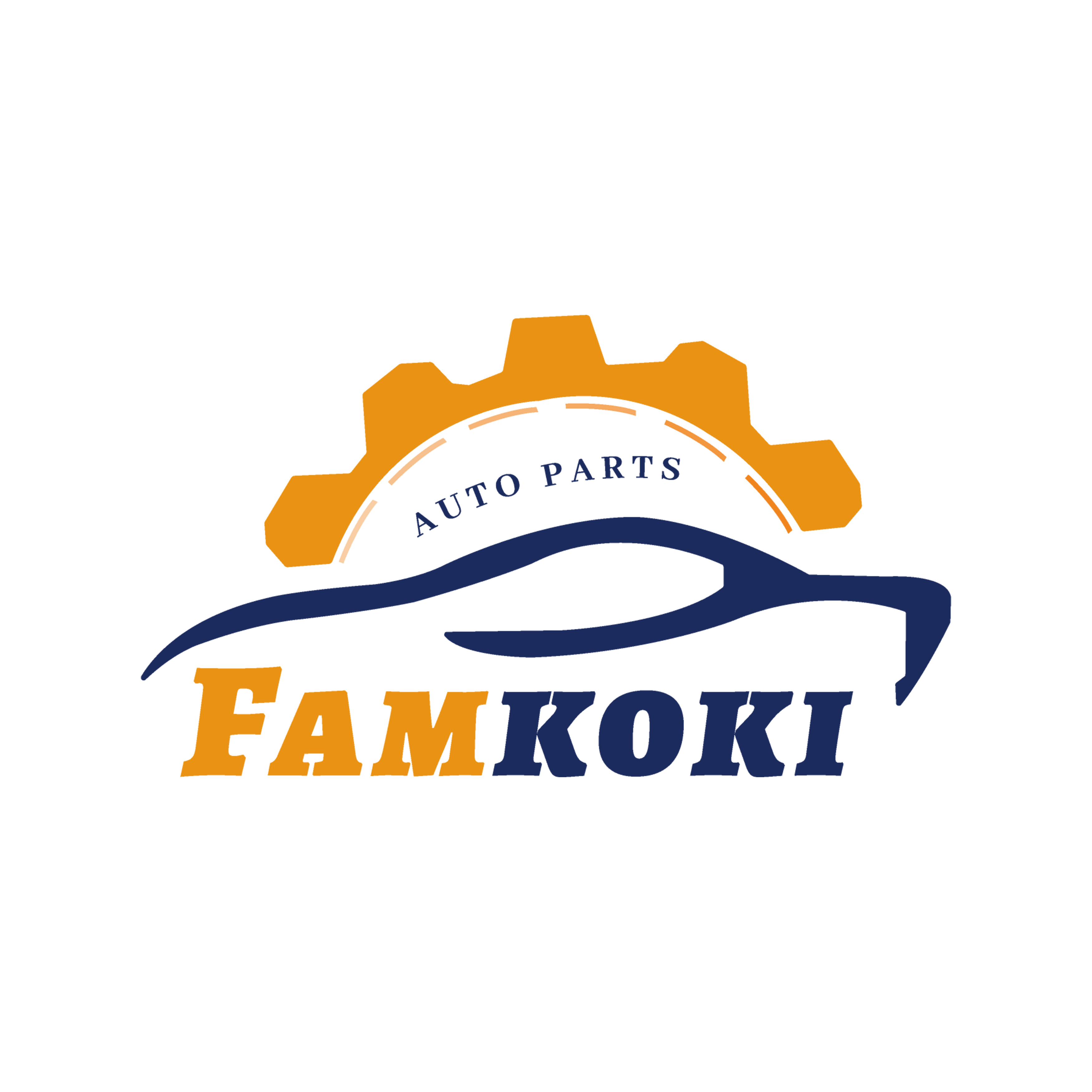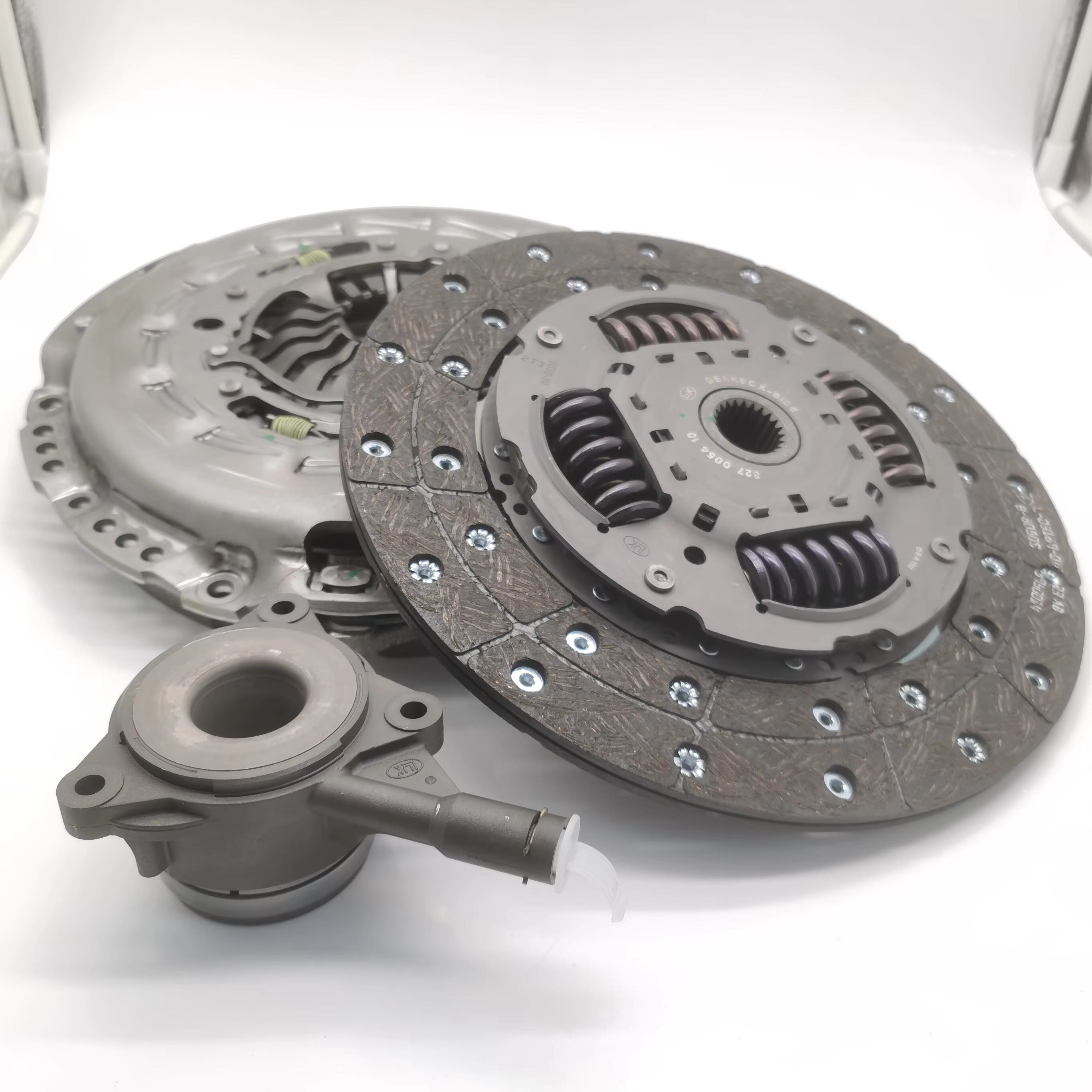Brake Pads and Rotors: Types, Performance, and Longevity
Ceramic, semi-metallic, and organic brake pads: differences and use cases
Brake pads these days come in three main types, and each works better for certain kinds of driving situations. Organic pads are basically fiber and resin composites that run pretty quiet and don't eat through rotors too fast, although most folks find they need replacing around the 20k to 30k mile mark. These work great for people who mostly drive around town in their daily commuters. Then there's semi-metallic pads which have about 30 to 60 percent metal content. They stop powerful vehicles like SUVs and trucks really well, but drivers should expect louder braking sounds and faster rotor wear as tradeoffs. For those looking at premium cars or performance machines, ceramic pads tend to be the go-to choice. Some models can actually last up to 70,000 miles before needing replacement. Plus they leave behind much less dust on wheels and handle heat buildup better because manufacturers reinforce them with copper compounds inside the material mix.
Rotors: managing heat dissipation and resistance to warping
When cars come to a stop, brake rotors actually soak up around 90% of all that kinetic energy, which means managing heat buildup is absolutely critical. The vented type has those internal vanes that help push heat away from the rotor surface, typically cooling down about 40% quicker compared to regular solid rotors. Most everyday vehicles rely on high carbon iron alloy rotors because they last reasonably long and don't break the bank either. For serious performance needs though, there are these special carbon cast versions designed specifically to handle extreme temps over 1,000 degrees Fahrenheit without getting warped out of shape, making them perfect for race cars or heavy duty trucks where stopping power matters most.
Drilled and slotted rotors for performance and wet-condition driving
Rotors designed for performance typically come with either drilled holes or machined slots to boost their effectiveness. Slots work great at clearing away water, gas buildup, and road debris from brake pads, which means better grip when driving in rainy weather conditions. Some studies suggest this can improve contact area by around 22 percent. Drilled versions do cut down on weight since they remove about 15% of the rotor's mass, making them respond faster to braking inputs. However there's a downside too. These drilled surfaces tend to develop tiny cracks over time when subjected to intense heat and pressure, especially during track days or aggressive driving scenarios. Mechanics should always check these rotors closely during routine inspections to catch any early signs of damage before they become serious problems.
Matching pad and rotor types for optimal safety and lifespan
Getting the right component combinations makes a big difference for safety and how long things last. For heavy duty stuff, semi metallic brake pads really shine when paired with those coated or reinforced rotors. This combo cuts down on annoying squeals and keeps wear at bay. When it comes to performance cars, ceramic pads go hand in hand with high mass or vented rotors because they stop those pesky heat spots from forming. According to recent findings from the Vehicle Safety Institute, matching up brake parts properly adds around 35% more life to the whole system versus mixing incompatible parts. And nobody wants to mix abrasive pads with thin rotors either since that just speeds up wear and might make stopping take 20% longer than needed.
Calipers and Brake Fluid: Ensuring Hydraulic Efficiency
Floating vs. Fixed Calipers: Design Impact on Braking Performance
Today's brakes come with either floating or fixed calipers. Let's start with floating ones first. These typically feature just one piston that slides sideways to push the inner brake pad against the rotor surface. As this happens, the caliper housing actually pulls the outer pad into position too. The design keeps things simple and affordable, which is why we see them so commonly in regular passenger cars. Fixed calipers work differently. They put pistons on both sides of the rotor disk, creating balanced pressure across the pads. This setup generally performs better and makes the pads last longer before needing replacement. According to some recent research from 2023 looking at brake failures, fixed calipers cut down on those annoying cases where one side wears faster than the other by around 18 percent. Of course there's a trade off here since these systems tend to be more complicated overall and need more frequent checkups and adjustments over time.
Maintaining Caliper Seals and Pistons During Routine Service
The seals on calipers do two main things they keep the hydraulic pressure where it needs to be and stop dirt from getting into the system. Meanwhile, those pistons inside need to move back easily or else we end up with brake drag problems. When changing brake pads, take a good look at those seals for any cracks and make sure to clean out the pistons properly with something made specifically for brakes. One thing people often forget? Putting some silicone based grease on those slide pins in floating calipers. According to Ponemon research from 2023, this simple step actually prevents about one third of early caliper failures. Speaking of parts, when anything looks worn out, go for genuine OEM quality components instead of cheaper alternatives. The whole braking system just works better when everything matches up correctly.
The Role of Brake Fluid in Transmitting Hydraulic Pressure
Brake fluid works by transmitting force through hydraulic pressure, turning what someone does with the brake pedal into actual clamping power at those calipers, sometimes reaching over 1200 pounds per square inch. When there's too much moisture in the system, specifically if water content goes above 3 percent, this can really bring down the boiling point of the fluid by as much as forty percent. That makes vapor lock a real problem when someone slams on the brakes hard. For reliable performance, most manufacturers suggest doing some bench bleeding on master cylinders whenever putting in new parts. This helps get rid of any air bubbles that might have gotten trapped inside and keeps the pressure steady throughout the whole braking system.
DOT 3, DOT 4, and DOT 5: Compatibility and Performance Considerations
| Fluid Type | Dry Boiling Point | Wet Boiling Point | Compatibility |
|---|---|---|---|
| DOT 3 | 401°F (205°C) | 284°F (140°C) | Standard ABS |
| DOT 4 | 446°F (230°C) | 311°F (155°C) | High-Perf ABS |
| DOT 5 | 500°F (260°C) | 356°F (180°C) | Silicone-Based |
Most cars on the road today rely on DOT 4 brake fluid because it boils at higher temperatures and works well with those glycol-based ABS systems. Then there's DOT 5, which is made from silicone. Mixing this stuff with anything else is a big no-no. When silicone gets into glycol systems, it creates these pesky air bubbles that make brakes feel spongy and less responsive. Check what the carmaker recommends in the owner's book before topping off or replacing fluid. According to recent studies from SAE, around four out of five seal failures happen when people put the wrong kind of fluid in their braking system. A simple mistake can lead to some serious problems down the road.
Recognizing Warning Signs of Failing Auto Brake Parts
Common Symptoms: Squeaking, Grinding, Soft Pedal, and Warning Lights
Paying attention to those early warning signals can stop more than half of all brake problems before they happen, as noted in research from SAE International back in 2024. When brakes start making that annoying squeaking noise, it's generally a sign the pads are getting pretty thin, probably around 3mm thick at this point, which means those little wear indicators built into most modern pads are now rubbing against the rotor surface. If the sound changes to grinding instead, that's bad news because it means the pads are completely gone, and serious damage to the rotors could occur after just about 50 miles of driving like that. And let's not forget about that soft feeling when pressing the brake pedal. This typically happens when there's air trapped somewhere in the brake lines or maybe a small leak has developed somewhere. According to various industry reports looking at brake fluid systems, this kind of issue can cut down on hydraulic efficiency anywhere between 30% and 40%, which definitely affects how well the car stops.
Linking Brake Noises and Vibrations to Specific Component Failures
Vibrations during braking can pinpoint specific issues:
- Steering wheel shudders: Typically caused by warped front rotors (85% of cases)
- Pedal pulsation: Often due to irregularities in rear rotors
- Constant squeal: Frequently linked to seized caliper slider pins
A 2023 review of 1,200 repair orders revealed that 78% of drivers who ignored early vibration symptoms ended up needing full rotor replacements instead of affordable resurfacing.
Case Study: Preventing Total Brake Failure Through Early Detection
A commercial fleet that adopted quarterly brake inspections identified 93 developing issues over 18 months:
- 47 instances of pads nearing minimum thickness (2.5–3mm)
- 29 leaking caliper seals
- 17 samples of contaminated brake fluid
This proactive approach eliminated roadside failures and saved $28,700 compared to reactive repairs. As outlined in brake maintenance best practices, regular inspections every 6,000 miles reduce component failure risks by 61%.
Best Practices for Maintaining Auto Brake Parts Safely
Impact of Driving Habits on Brake Wear and Longevity
Driving style significantly affects brake life. Smooth acceleration and deceleration can extend pad longevity by up to 40%, according to a 2023 study by transportation safety experts. Key habits include anticipating traffic flow, coasting to slow down, and avoiding excessive loads that increase braking demands.
Importance of High-Quality Replacement Parts and Proper Installation
Substandard or counterfeit brake components can increase stopping distances by 18–22% (NHTSA 2022). Always choose parts meeting OEM specifications and ensure technicians adhere to critical installation steps: correct caliper alignment to prevent uneven wear, proper torque on rotor bolts, and thorough bedding-in of new pads and rotors to optimize friction transfer.
Recommended Maintenance Schedule: Inspections, Fluid Flushes, and Replacements
| Task | Frequency | Critical Checks |
|---|---|---|
| Visual inspections | Every 6 months | Pad thickness, rotor scoring, fluid leaks |
| Brake fluid flush | Every 2–3 years | Moisture content (<3%), DOT compliance |
| Full system service | Every 48,000 miles | Caliper function, hose integrity, sensor operation |
Following this schedule reduces the risk of catastrophic brake failure by 67%, based on 2023 industry guidelines.
FAQ Section
What are the main types of brake pads?
The main types are ceramic, semi-metallic, and organic brake pads, each suited for different driving conditions and preferences.
How do drilled and slotted rotors enhance performance?
Drilled rotors reduce weight and respond faster, while slotted rotors clear debris for better grip; however, drilled rotors can develop cracks over time.
What should I consider when choosing brake fluid?
Consider compatibility with your vehicle's ABS system and whether to use glycol-based fluids like DOT 3 and DOT 4, or silicone-based DOT 5.
How can I recognize warning signs of failing brake parts?
Look for symptoms like squeaking, grinding, a soft pedal, and warning lights which indicate potential issues with brake components.
 EN
EN
 AR
AR
 FR
FR
 KO
KO
 PT
PT
 RU
RU
 ES
ES


